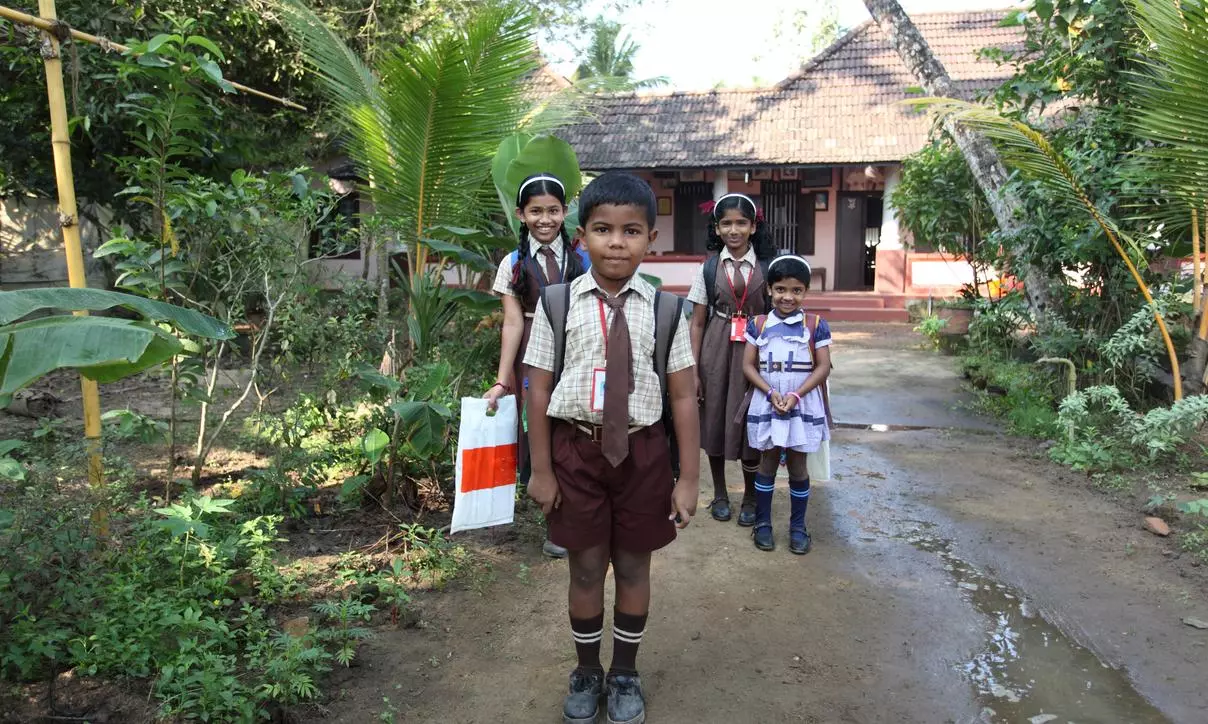
Only 57.2% schools have working computers, enrolment fell by 37L in 2023-24: Govt data
Officials clarify that data observed real changes from previous years, as exercise of maintaining separate student base is different from 2021-22 or prior years

Enrolment in schools across India fell by 37 lakh in 2023-24 compared to the previous year, the Union education ministry’s Unified District Information System for Education (UDISE) data have shown.
Only 57 per cent schools have functional computers while 53 per cent have Internet access, according to the data.
What is UDISE Plus?
The UDISE Plus is a data aggregation platform maintained by the education ministry to collate school education data from around the country. UDISE+ 2023-24 attempted to collect student-wise data along with their Aadhaar numbers on voluntary basis to establish a uniqueness. Overall, more than 19.7 crore students provided Aadhaar numbers by 2023-24.
While the number of enrolled students in 2022-23 was 25.17 crore, the figures for 2023-24 stood at 24.80 crore. The number of girl students dropped by 16 lakh during the period under review, while the number of boy students fell by 21 lakh.
Also read: Tutor, clerk, peon, cook, surveyor: Unseen travails of Indian teachers
Education among minorities
The representation of minorities in total enrolment stood at around 20 per cent. Among the minorities, 79.6 per cent were Muslims, 10 per cent Christians, 6.9 per cent Sikhs, 2.2 per cent Buddhists, 1.3 per cent Jains, and 0.1 per cent Parsis.
At the national level, 26.9 per cent students registered in UDISE+ were from the general category, 18 per cent from Scheduled Caste, 9.9 per cent from Scheduled Tribe, and 45.2 per cent from the Other Backward Class category.
Officials, however, clarified that the data observed some real changes from the previous years, as this exercise of maintaining a separate student base is totally different, unique and incomparable to 2021-22 or prior years.
“Individual student-wise data reflects a realistic and more accurate picture of the education system, which is being attempted for the first time at the national level, marking a departure from the school-wise consolidated data collected till 2021-22. Hence, the data is not strictly comparable to the previous reports on various educational indicators such as GER, NER, dropout rates, etc.,” a senior official said.
GER reveals disparities
The Gross Enrolment Ratio (GER) — which compares the enrolment in a specific level of education to the population of the age-group that is most age appropriate for that level of education — revealed disparities. While the preparatory level boasts a GER of 96.5 per cent, the foundational level is at a mere 41.5 per cent.
Middle and secondary levels fare worse at 89.5 per cent and 66.5 per cent, respectively. Dropout rates also rose sharply at higher education levels, from 5.2 per cent in middle school to 10.9 per cent at the secondary stage.
Also read: Study tours, period leave: Kerala rebuilds schools with inclusive reforms
Effectiveness of NEP
“Curtailing dropouts and ensuring universal access to education at all levels by 2030 is one of the primary goals of the National Education Policy (NEP) 2020 and Sustainable Development Goals (SDGs). Areas such as enrolment and retention of students show how many students who entered the school at Class-1 are being retained in subsequent years, representing effectiveness of policy.
“With individual student-wise data, dropout of students can now be identified precisely, who can be tracked and be brought back to school. This will also help monitor the progression of students through their entire school life. It is calculated based on actual movement of students from one level to another using individual student-wise data. It represents the actual scenario more precisely,” said an official.
Officials said the student-wise data also helps identify “ghost students” and aids in transferring benefits to the deserving students, resulting in savings to government and good governance by way of better expenditure management.
Basic amenities
Coming to facilities, while over 90 per cent of schools are equipped with basic amenities such as electricity and gender-specific toilets, advanced facilities such as functional desktop, Internet access, and ramps with handrails remain limited.
Only 57.2 per cent of schools have functional computers, 53.9 per cent have Internet, and 52.3 per cent are equipped with ramps, the report noted, underscoring significant gaps in accessibility and technological readiness.
“Despite efforts under NEP, 2020, infrastructure gaps hinder our progress toward universal education. Optimising resources is key to meeting the ambitious targets for 2030,” an education ministry official said.
NEP, 2020, prioritises inclusion and equity, and the UDISE Plus data offers a snapshot of representation.
Also read: Will continue to follow no-detention policy upto class 8: TN Minister
Disparities among states
The report also noted that the availability of schools, teachers and students enrolled in different states are different.
“In states such as Uttar Pradesh, Madhya Pradesh, Assam, Odisha, Andhra Pradesh, Himachal Pradesh, Jammu and Kashmir, Uttarakhand and Rajasthan, the percentage of schools available is more than the percentage of students enrolled, implying underutilisation of available schools.
“Whereas in states like Telangana, Punjab, West Bengal, Haryana, Gujarat, Maharashtra, Tamil Nadu, Delhi and Bihar, the percentage of available schools is significantly less as compared to enrolled students, indicating better utilisation of infrastructure,” the report said.
(With agency inputs)

